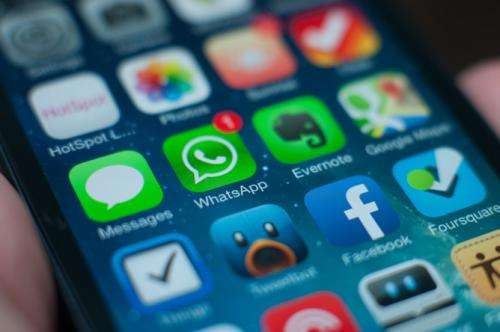Texting is bound to decline but it won't die out just yet

Reports this week reveal the number of text messages sent between mobile phones has fallen into decline for the first time since the service was introduced. According to figures from Deloitte, the number of messages sent worldwide fell from 152 billion in 2012 to 145bn in 2013.
The numbers confirmed what many have suspected for some time – mobile users are abandoning the built-in phone service and using internet-based apps to communicate. It's true that services such as WhatsApp are playing an increasingly central role in our communications but it's not the end for the text.
The growth of text
The first text message was sent from Vodafone's headquarters in Newbury, England, on 3 December 1992, by engineer Neil Papworth. It was quickly adopted by the dominant carriers in telecommunications, who have, until only very recently, been in complete control of the market. They have placed strict constraints on the amount we can message and how much it will cost us when we do.
This was acceptable when they were the only providers of such technology, but with the availability of internet-based instant messaging, the method of "pay-as-you-go" is equivalent to putting money in a pot every time you open your mouth and having your mouth clamped shut after you've said 500 words. It's archaic.
Instant messaging frees us from these chains. It removes the previous oligopoly of carriers and allows us to choose from a range of communication methods. This type of competition is healthy, and pushes technology to evolve in new and exciting ways. I am not using a particular instant messaging app because its the only one I can afford, I am using it because it allows me to communicate with people in new and exciting ways.
More than a message
The essence of a message is about so much more than its content. The ability to decorate the content with emojis, to provide additional media to support the content, and even the medium through which the content is sent, all have a relevant bearing on how the message is interpreted by its intended audience.
SMS was an early way of sending text messages by phone at a time when providers didn't really need to think about this symbiotic relationship. But modern app developers are now designing innovative ways to communicate.
If I send something via email it might be because I want it to look more formal than the same thing sent via text or WhatsApp. I might only email my boss, text message my mum, but WhatsApp all my friends. In one sense, this is about ubiquity. Older generations are probably less likely to adopt new services such as WhatsApp.
But it might also be that I don't want to communicate with my boss and my mum through a medium I consider to be very informal, the same medium I use to send Harlem shake videos to my friends. It just feels wrong and sends a certain message about the content to the recipient.
Snapchat is an excellent example of this trend. It is a service designed just for fun and is therefore used for fun content. Messages are sent in the form of pictures and disappear up to 10 seconds after they've been opened. It isn't designed for serious content that needs to be considered for longer and is therefore used to communicate just the fun stuff.
Even in an age in which we email job applications to potential employers, many people still choose to attach their cover letter in the form of a word document rather than send it in the body of the email. We remain attached to the symbolism of the letter as a way of conveying the gravity of our intent.
These new ways of communicating offer us cheaper services, more options to send different types of message and allow us to communicate with more than one person at a time, but by their very nature, they don't necessarily spell doom for the slightly more formal medium of text, just as email hasn't quite done for the letter.
One medium to bind them
SMS may cling on to its place in our communications for some time for another important reason. Short of taking the trouble to call someone (and who does that these days?) it remains the only sure-fire way to contact people through your mobile.
If your contact has a mobile phone, then they almost definitely have SMS. This is not the case for the new services on offer and may never be. While we have sought to break free from the SMS oligopoly, we now have a system that offers us almost too many options.
I might prefer WhatsApp but my friends might use Skype or Kik, and their friends might use something different. We might be willing to download another app to stay in touch but what if every person I know has a different go-to service? I'd need to download a hundred different apps and don't have the time to be constantly moving between them. While many large networks and communities will favour a particular messaging service, it is likely that SMS will remain the most ubiquitous service for a while to come.
Source: The Conversation
This story is published courtesy of The Conversation (under Creative Commons-Attribution/No derivatives).
![]()

















